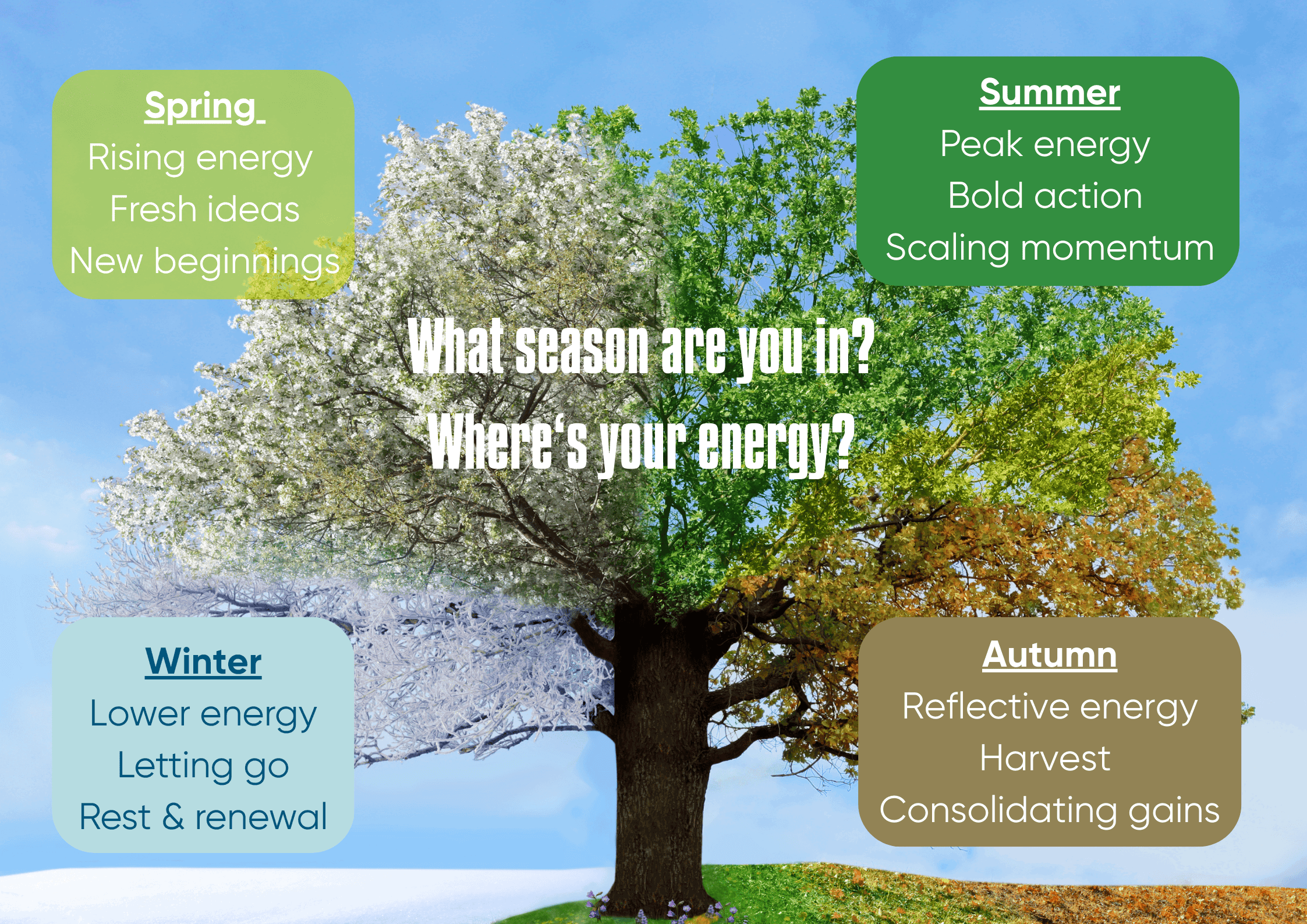Scaling a tech business often feels like running in perpetual summer — nonstop expansion, investor demands, product launches, hiring. But without autumns and winters — harvest and renewal — that energy burns out. The healthiest leaders and companies use seasonal energy: cycles of growth, reflection, rest, and regeneration.
At MojiiCo, we help leaders cut through chaos and find clarity. A seasonal lens — inspired by regenerative leadership thinking — helps tech leaders and entrepreneurs build companies that thrive for the long term, not just the next quarter.
Learning from Real-World Leaders
Some of today’s most successful organisations show how cycles of growth and renewal fuel sustainable success.
Under Satya Nadella, Microsoft shifted culture from “know-it-all” to “learn-it-all” (Next Big Idea Club). He created internal listening systems and a “culture cabinet”, and wasn’t afraid to prune projects (closing down the mobile OS while betting on cloud and AI). This mix of bold spring/summer growth and autumn/winter reflection reset Microsoft’s trajectory.
Patagonia scaled by embedding regeneration into its business: adopting regenerative organic certification and radical supply-chain transparency, launching Worn Wear repair/reuse programs and training activist leaders. Their approach balanced growth with autumn harvest and winter renewal, building loyalty and resilience.
Shopify built scale with intentional cycles. They use 6-week review cadences and weekly check-ins, combine distributed remote work with intense “burst” gatherings , and even run a “Delete Code Club” to prune unnecessary code. By marking transitions and simplifying, they prevent the entropy of constant summer growth.
Reflection: As a scale-leader, ask yourself:
Which season are you in personally, and which is your organisation in?
Where are you forcing summer-style growth when autumn harvest or winter renewal would serve you better?
What structures or rituals exist to close one cycle before starting another?
How do you communicate cyclical leadership to investors or boards who expect linear growth?
Do you model cycles in your own leadership energy — taking time to reflect, learn, and reset?
Here are some actions you can consider taking
Create transition rituals - marking seasons matters.
Microsoft uses listening systems and culture resets and Shopify uses six-week cycles and “delete code” practices.
Prune and simplify - Autumn harvest isn’t just about celebrating, it’s also about letting go to make room for new things.
Shopify removes unused code and Patagonia stops harmful supply-chain practices.
Schedule reflection windows - reflection prevents repeating mistakes.
Microsoft sunsets projects and runs culture surveys and Patagonia builds feedback into regenerative farming.
Align personal energy cycles with business energy cycles - model the way, leaders set the tone.
Nadella openly practices a growth mindset and Patagonia leaders integrate personal reflection into decisions (SOCAP Global).
Communicate the cycles - transparency builds understanding, alignment and impact.
Nadella published Hit Refresh to explain cultural renewal and Patagonia makes its regenerative stance public.
Why This Matters
Seasonal energy thinking can help:
Reduce burnout, as healthier leaders and teams aren't always ON and can build energy to use when it's most needed to sustain performance.
Spark innovation, reflection and 'rest' creates space for insight.
Build resilience, cyclical adaptability beats rigid linearity.
Attract talent, as people want to join organisations that prioritise sustainability in every day life and culture, not just as a product or value.
Final food for thought
Leadership in tech doesn’t have to mean endless hustle. Nature shows us the power of cycles. By aligning leadership energy with the seasons - growth, harvest, and renewal - tech entrepreneurs and scale-up leaders can create clarity, resilience and sustainable success.
So ask yourself: what season are you really in? And how would your leadership change if you stopped chasing endless summer, learnt from Nature and embraced seasonal cycles to optimise energy, performance and innovation?

